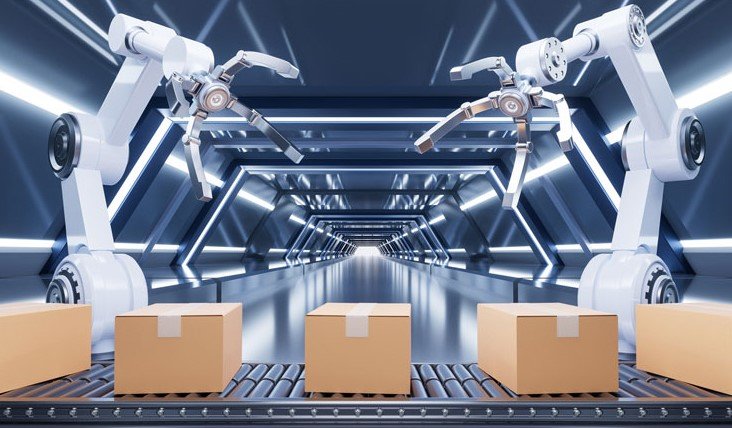In a fast-changing world, businesses face new pressures from global trade issues and rising customer demands for speed. Reimagined logistics, powered by smart tech like AI and real-time tracking, offers a way forward, helping companies build flexible supply chains that boost efficiency and cut costs, according to recent industry insights.
This transformation is happening now, with firms shifting to networks of smaller warehouses closer to customers. Experts say this approach not only speeds up deliveries but also makes operations more sustainable and responsive to market shifts.
The Changing Face of Supply Chains
Supply chains have evolved from simple cost-cutting tools to vital drivers of business success. Today, companies deal with disruptions like trade tensions and unpredictable demand, pushing them to rethink traditional models.
Recent data shows that over 70 percent of businesses plan to invest in advanced logistics tech by the end of 2025. This shift focuses on creating agile systems that adapt quickly. For instance, integrating AI helps predict issues before they happen, reducing downtime.
Experts highlight how these changes address real-world challenges. Global events, such as recent supply shortages in key industries, have shown the need for stronger networks. Businesses that embrace this can turn potential problems into opportunities for growth.

One key trend is the move toward hyper-localization. Companies now use local stores as mini-fulfillment centers, cutting delivery times from days to hours. This not only meets customer expectations but also lowers shipping emissions.
Benefits of Distributed Warehouse Networks
Distributed networks bring inventory closer to buyers, making supply chains faster and more reliable. Instead of relying on one large central hub, firms spread out smaller sites across regions.
This setup reduces long-haul transport needs, which can lower fuel costs by up to 30 percent in some cases. It also minimizes waste from excess packaging and overstocking.
- Faster response to customer orders, often within the same day.
- Better handling of sudden demand spikes, like during holiday seasons.
- Improved sustainability through shorter shipping routes.
Businesses report higher customer satisfaction with this model. For example, retailers who adopted it saw a 20 percent rise in repeat purchases. The key is connectivity, where real-time data links warehouses, trucks, and stores seamlessly.
However, challenges remain. Setting up these networks requires upfront investment in tech and training. Yet, the long-term gains in efficiency often outweigh the initial costs.
Logical reasoning suggests that as e-commerce grows, with online sales projected to hit new highs in 2025, distributed systems will become essential. They help companies stay competitive in a market where speed wins loyalty.
SAP Technology Leads Supply Chain Innovations
SAP stands out with tools that integrate AI and cloud systems for smarter logistics. Their platforms offer real-time visibility, allowing businesses to track shipments and inventory instantly.
Recent announcements from SAP include AI-driven updates that transform supply chains into predictive networks. These innovations help forecast demand and automate routine tasks, freeing up teams for strategic work.
| Innovation | Key Benefit | Example Use |
|---|---|---|
| AI Forecasting | Predicts demand accurately | Reduces overstock by 25 percent |
| Real-Time Tracking | Monitors shipments live | Avoids delays from traffic or weather |
| Cloud Integration | Connects all operations | Streamlines data across global teams |
Companies using these technologies report smoother operations. For instance, automation cuts manual errors and speeds up decision-making. This is crucial in industries like retail and manufacturing, where timing matters.
SAP’s focus on network-centric strategies aligns with broader trends. By connecting partners in the supply chain, businesses gain a unified view, making collaboration easier.
Experts note that these tools are not just about tech; they enable a mindset shift toward proactive management. As global trade evolves, such innovations keep firms ahead.
Key Trends Shaping Logistics in 2025
Looking ahead, several trends will define logistics. AI and automation top the list, with digital twins simulating supply chains for better planning.
Sustainability is another big focus. Businesses aim to reduce carbon footprints through efficient routing and eco-friendly materials. Projections show a 15 percent drop in emissions for firms adopting green practices.
Blockchain adds security and transparency, tracking goods from source to shelf. This builds trust, especially in food and pharma sectors.
Integration of apps for mobile management lets teams handle logistics on the go. Recent events, like tech conferences showcasing these tools, underline their growing role.
Overall, these trends point to a future where logistics drives innovation. Companies that invest now will lead in efficiency and customer service.
Preparing Your Business for the Future
To thrive, businesses should assess current systems and identify gaps. Start with small pilots of new tech to test impacts without full overhaul.
Training staff on these tools is vital. Many firms offer workshops to build skills in AI and data analysis.
Partnering with tech providers like those offering integrated platforms can accelerate adoption. Focus on scalability to handle future growth.
In the end, reimagined logistics is about more than survival; it’s about leading in a dynamic market. Share your thoughts on these changes in the comments, and pass this article along to colleagues who might benefit from these insights.








